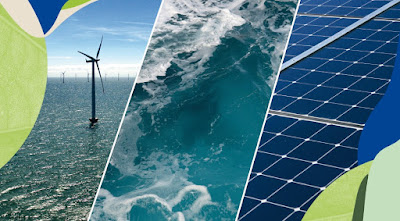Renewable energy nowadays has been in talks due to rising climate change and the increase in global warming. To reduce the effect on climate we have to shift from non-renewable energy sources to renewable energy sources which will benefit not only us in an economic way but also save the planet.
The different scopes in renewable infra:
1. Solar Parks
2. Wind Parks
3. Ocean Water Energy
4. Oceanic Wind Park
1. Solar Parks
2. Wind Parks
3. Ocean Water Energy
4. Oceanic Wind Park
Such parks and infra will help in the extraction of such energy and building such infra should be the utmost priority of public and private companies to invest and build such projects.
The best till date form is Solar and Wind energy project which contributes highest in energy supply and also proved that this form can be cheap and will help reduce the spend of consumers will efficient energy.
The project which I have also covered in my blogs can be read by clicking the links down below:
The best till date form is Solar and Wind energy project which contributes highest in energy supply and also proved that this form can be cheap and will help reduce the spend of consumers will efficient energy.
The project which I have also covered in my blogs can be read by clicking the links down below:
Some major project coming up is a combination of various form such as
Solar with Wind, Wind with Tidal, and many more...
So the thing to conclude here is, if you find courses and training of such renewable energy infra, you should definitely try giving it a shot and see the scope in future from now. (a quote I read said)
A Transition To Clean Energy Is About Making Investment In Future



Comments
Post a Comment
Thank You for visiting, if you have any questions please feel free to ask: